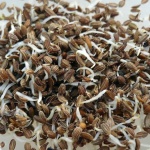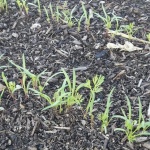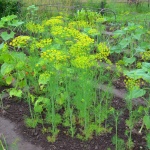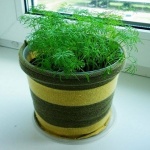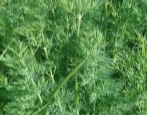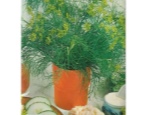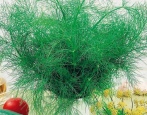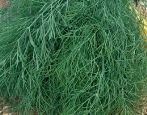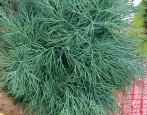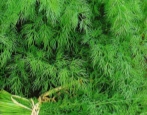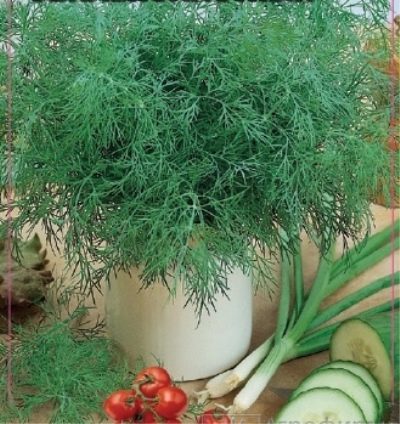
- Authors: Vinogradova A.F., Saprykina A.V.
- Year of approval: 2004
- Leaf rosette: raised
- Ripening terms: mid-season
- The period from germination to biological ripeness (harvesting with spices): 80 days
- Foliage: strong
- Leaf size: medium size
- Leaf color: green with a waxy bloom
- Dissection of leaves: strong
- Plant height in the flowering phase, cm: 130
Dill is a variety of vitamins straight from the garden. Growing greens is quite simple even for an inexperienced vegetable grower, the main thing is to choose an unpretentious and productive variety. These are the mid-season varieties of domestic selection called Abundant-leaved.
Breeding history
Dill Abundant is a relatively new variety, bred by Russian breeders of the Seeds of Kuban company in 2002. The authors of the vegetable culture are A.F. Vinogradova and A.V. Saprykina.The dill was added to the State Register of crops approved for use on the territory of the Russian Federation in 2004. Healthy greens are grown in all climatic regions of the country.
Description of the variety
Mid-season dill Abundant-leaved is a powerful plant with a raised erect deciduous rosette. The plant is characterized by abundant thickening of medium-sized leaves. The color of the leaves is rich green, the plates have a pronounced waxy bloom, and their edges are strongly dissected.
Characteristics of the appearance of the plant
Dill belongs to the bushy varieties. The length of the shoots reaches 26-36 cm. During the flowering period, the height of the plant can reach 125-130 cm. The inflorescence of the variety is quite late. The umbrella of the plant is medium-sized, slightly convex. Greens can be cut much earlier than the plant blooms, reaching biological maturity, since then it acquires some rigidity. The collection of aromatic seeds is carried out a little later, 7-10 days after flowering. The mass of one plant, cut for greenery, does not exceed 20-25 grams.
The great advantages of the variety are good transportability and long shelf life. For about a month, greens remain fresh if they are packed in a vacuum bag or cling film.
Purpose and taste
Dill Abundant-leaved is famous for its excellent aroma and taste, therefore it is massively grown by farmers for sale. Dill leaves have good juiciness, a pronounced aroma and piquant taste. Tenderness and freshness are felt in the taste.
This type represents a class of greens with a universal purpose: it is eaten fresh, dried, frozen, used during the conservation of vegetables, and also used in the production of spices.
Ripening terms
This variety belongs to the mid-season species. From the moment of mass germination to technical ripeness, only 40 days pass. During this period, you can cut the dill for greens. From the emergence of sprouts to biological maturity, when you can collect seeds for spices, it takes 80 days. The harvesting period is extended: it lasts from May to September.
Yield
The crop yields are high. On average, from 1 m2 of plantings, up to 3-3.4 kg of dill can be cut for greens, and when harvested for spices, you can count on 4-4.8 kg / m2. Yield indicators depend on weather disasters and proper plant care.
Growing and care
Dill is grown through direct sowing of seeds into the ground.It is best to sow seeds during a period when the temperature has stabilized to + 16-18 degrees, and the soil has warmed up to + 12-13. Some vegetable growers claim that this variety is quite cold-resistant, therefore it can grow even at +3 degrees. Dill is sown from late April to mid-August. If you want to harvest a large harvest, then you can carry out several crops with an interval of 12-14 days. When sowing, the scheme of 20x5 cm is followed. The depth of the seeds should not exceed 1.5-2 cm. Before planting, it is recommended to fertilize the soil with superphosphate, potassium salt and manure. It is strictly forbidden to plant a spice near celery.
Caring for the spice involves the following activities: regular and abundant watering every 2 days, weeding and loosening the soil, thinning the beds, preventing diseases and pests. In addition, if there is a likelihood of night frosts, then the seedlings should be covered with foil.
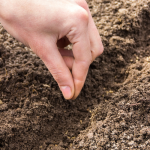
Dill cultivation is available in any conditions: open and closed ground, on a balcony or windowsill. Before planting dill, you need to carry out pre-sowing seed treatment, correctly determine the timing, prepare the beds.
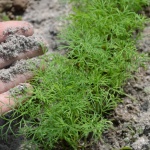
Soil requirements
The plant is completely undemanding to the structure of the soil, the main thing is that it is light, fertile, breathable and moist. It is important that the soil is not acidic. Light loamy, sandy loam and neutral soils are considered the best options.
Required climatic conditions
Planting dill is best done on prepared beds: they need to be cleaned of weeds and moistened. It is important that the site is well and constantly illuminated by the sun, located in the southern part of the garden.
Disease and pest resistance
The plant has an average immunity, so it is exposed to some diseases. These are mainly peronosporiasis, powdery mildew, cercospora, fusarium. Since greens are eaten fresh, spraying with chemicals is not recommended; it is better to process the seeds before planting.
